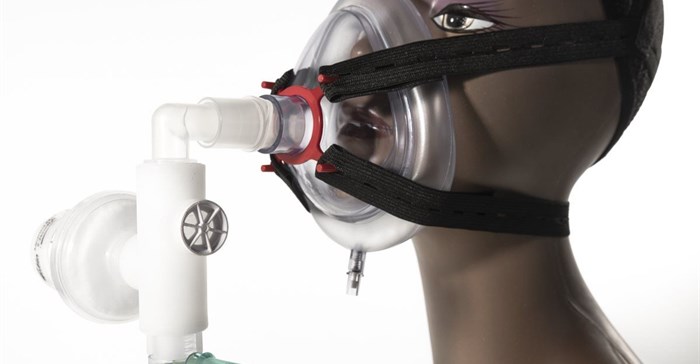Innovation bridges oxygen supply gap for Covid-19 patients

The OxERA (oxygen-efficient respiratory aid), is effective where there are a large number of Covid-19 patients yet a lack of skilled staff, ICU and high care facilities; and insufficient bulk oxygen supplies. It effectively bridges the gap between current standard oxygen therapy via face masks and ICU-based non-invasive or mechanical ventilation, while requiring no more oxygen flow than a standard face mask.
The device was developed by a group of East London-based volunteers that includes doctors, engineers and entrepreneurs. The has now approved the OxERA device for emergency Covid-19 use, which will be manufactured and distributed by Gabler Medical.
Dr Craig Parker, a medical officer working in anaesthetics with a background in mechanical engineering, says the group was determined to find a solution when they realised that South Africa would face similar patient loads seen in Europe during the Covid-19 pandemic, but would have limited high care capacity and fewer resources to respond.
They set up a social enterprise (a business with specific social objectives) in March 2020, trading as Umoya (‘air’ in isiXhosa). Drawing inspiration from sources as diverse as scuba diving equipment and 3D printing, they built a working prototype within two weeks, and a 3D-printed final design within seven weeks.
Efficient oxygen use
The device's key components are an anaesthetic mask and an adjustable mechanical valve, known as a positive end respiratory pressure (Peep) valve. Oxygen supply is via a hose and accumulator bag, with the hose connected to any available oxygen source. A viral filter removes viral particles from expired air, which is a safety benefit for health practitioners using the device.
“The high oxygen level delivered by the device ensures that maximum oxygen content is available to diseased lungs. The valve on the device maintains slight pressure to prevent lungs from collapsing when the patient breathes out, and reduces the amount of work it takes to breathe.
“Furthermore, as oxygen supply can be adjusted to patient demand, less oxygen is usually required. In our oxygen resource-constrained environment this is a game changer. It allows even the most basic facilities, which are dependent on bottled oxygen or small oxygen concentrators, to provide a higher level of care than they are currently able to," Parker says.
Field testing
The device has been used successfully in environments ranging from rural clinics to specialist hospitals, and by all levels of staff. Hundreds of devices have already been distributed to 25 hospitals from Cape Town to Pretoria, says Umoya project manager Trevor Rossouw, a civil engineer with a background in project and business management. These include the Volkswagen Covid-19 field hospital, Frere and Cecilia Makiwane Hospitals and many of the academic hospitals in the country.
Many rural hospitals such as Zithulele on the Wild Coast and Madwaleni near Elliotdale have benefited from the devices. They have also been used by GPs for home and clinic treatment. Devices have also been distributed as far as Zimbabwe, DRC and the Central African Republic.
The device is Sahpra-approved for use during the Covid-19 emergency period. Interest in the device should gather momentum as clinical trials are being arranged at Chris Hani Baragwaneth Academic Hospital which offers specialist services to referred patients.
Production and distribution
The device will be manufactured, distributed and supported by Gabler Medical, which holds ISO13485 certification and specialises in the manufacture of oxygen therapy equipment.
“We can produce over 15,000 units a week, so capacity is not an issue. This will definitely create jobs during the pandemic and, if the product achieves general acceptance, also after the pandemic. The device holds export potential too," says Reiner Gabler, MD of Gabler Medical.



















